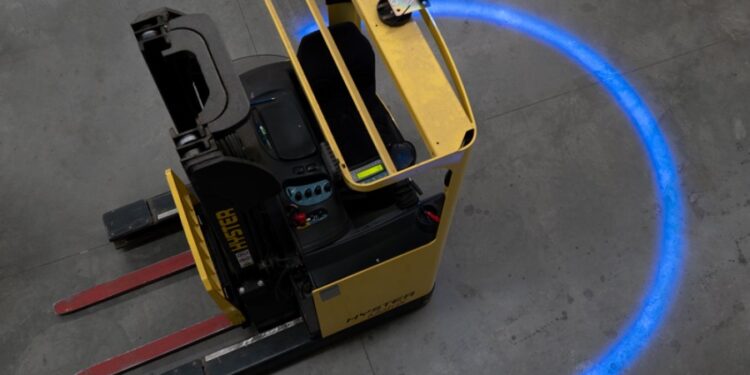Forklifts are indispensable machines in various industries, from warehouses to construction sites, facilitating the movement of heavy goods with efficiency and ease.
However, their utility comes with inherent risks, especially concerning accidents involving pedestrians and other vehicles in their vicinity.
Forklift warning lights are one of the crucial safety features employed to mitigate these risks and ensure a safer working environment. In this article, we delve into the importance of forklift warning lights and their role in accident prevention.
Understanding Forklift Accidents
Forklift accidents can result in serious injuries and fatalities, not only for operators but also for bystanders and workers in the vicinity. These accidents often occur due to factors such as:
- Limited Visibility: Forklifts have blind spots, making it challenging for operators to see pedestrians and obstacles around them.
- Noise Levels: In noisy environments, such as busy warehouses, pedestrians may not hear approaching forklifts, increasing the risk of collisions.
- Operator Error: Despite training, operators may make errors in judgment or fail to adhere to safety protocols, leading to accidents.
- Congested Work Areas: High-traffic areas with a mix of pedestrians, forklifts, and other equipment can increase the likelihood of accidents.
The Role of Forklift Warning Lights
Forklift warning lights play a pivotal role in enhancing safety by addressing the aforementioned challenges. Here’s how they contribute to accident prevention:
1. Increased Visibility:
Forklift warning lights, typically mounted at the front and rear of the vehicle, enhance visibility in low-light conditions or areas with poor visibility. These lights emit bright beams that alert pedestrians and other operators to the presence of a forklift, reducing the risk of collisions.
2. Auditory Warning Systems:
In addition to visual cues, some forklifts are equipped with auditory warning systems that emit sounds, such as alarms or beeps, when the vehicle is in motion. These alerts serve as an additional warning for pedestrians, especially in noisy environments where visual cues alone may not suffice.
3. Directional Lights:
Forklifts equipped with directional lights provide clear indicators of the vehicle’s intended path of travel. This helps pedestrians anticipate the movements of forklifts, allowing them to steer clear and avoid potential accidents.
4. Dynamic Lighting Systems:
Advanced forklift warning systems may feature dynamic lighting systems that adjust their intensity or pattern based on the vehicle’s speed, direction, or proximity to obstacles. These adaptive lights provide real-time feedback to both operators and pedestrians, promoting safer interactions in dynamic work environments.
Compliance and Regulations
Recognizing the importance of forklift safety, regulatory bodies such as the Occupational Safety and Health Administration (OSHA) in the United States have established guidelines and regulations governing the use of forklifts in the workplace.
These regulations often include requirements for the installation and maintenance of safety equipment, including warning lights, to minimize the risk of accidents and injuries.
Employers are responsible for ensuring compliance with these regulations and implementing measures to protect the safety and well-being of workers.
This includes regular inspections of forklifts and safety equipment, providing comprehensive training for operators, and fostering a culture of safety within the workplace.
Conclusion
Forklift warning lights are indispensable tools in promoting safety and preventing accidents in industrial settings. By enhancing visibility, providing auditory cues, and improving communication between operators and pedestrians, these lights play a crucial role in mitigating the risks associated with forklift operations.
However, while warning lights are effective, they are just one component of a comprehensive safety strategy. Employers must prioritize safety by investing in training, maintenance, and adherence to regulations to create a workplace environment where accidents are minimized, and workers can perform their duties with confidence and peace of mind. Remember, safety always comes first.







